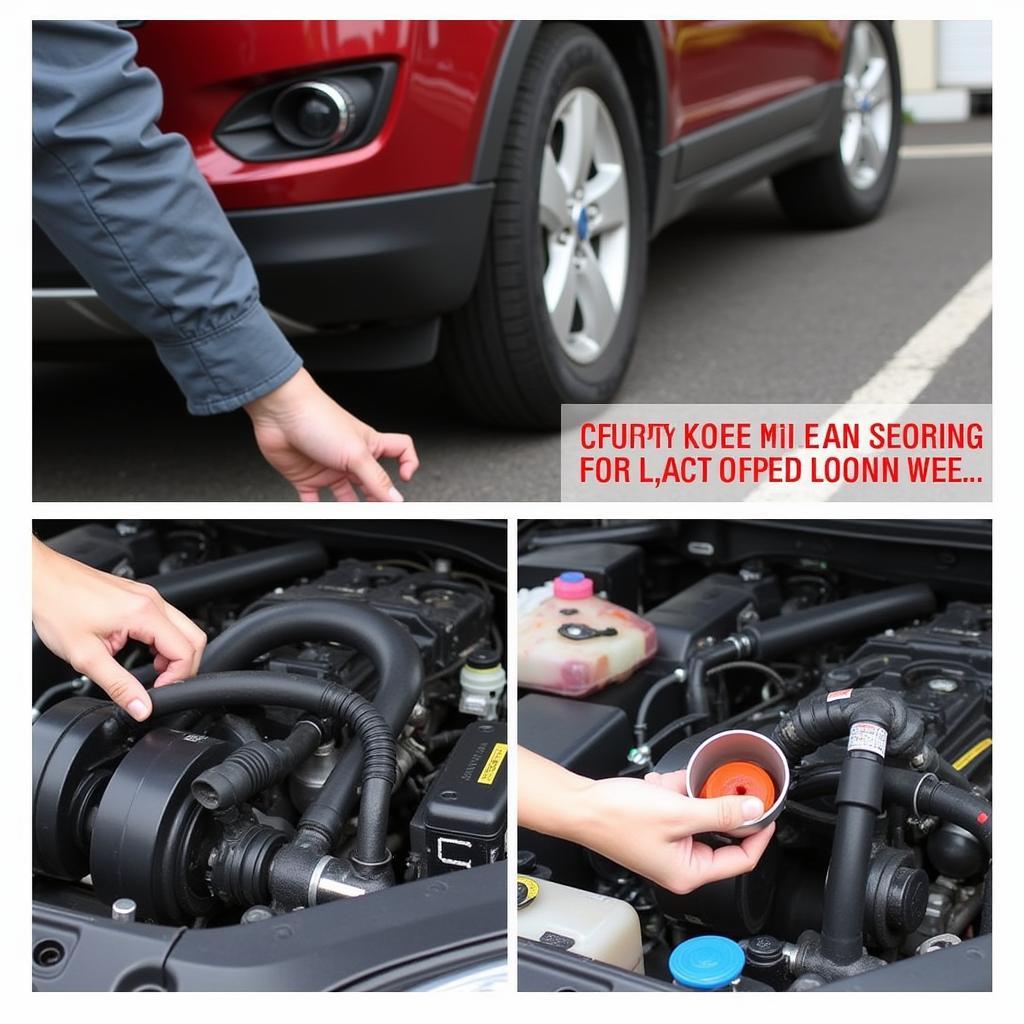A new car battery installed, the engine cranks, but the car won’t start? This frustrating situation is more common than you think. While a new battery often solves starting problems, sometimes the issue lies elsewhere. This guide provides a comprehensive troubleshooting approach to help you pinpoint the culprit and get your car back on the road.
Why a Car with a New Battery Cranks But Won’t Start
Several factors can cause this issue, ranging from simple fixes to more complex problems. Understanding the underlying mechanics of starting a car helps narrow down the possibilities. When you turn the key, the battery sends power to the starter motor, which cranks the engine. However, the engine also needs fuel and a spark to ignite and run. If any of these elements are missing, the car won’t start despite a new battery.
Common Culprits: Fuel, Spark, and More
- Fuel System Problems: A faulty fuel pump, clogged fuel filter, or a bad fuel injector can prevent fuel from reaching the engine.
- Ignition System Issues: A malfunctioning ignition coil, worn spark plugs, or a damaged distributor can prevent the spark needed for combustion.
- Security System Malfunction: The car’s anti-theft system might be preventing the engine from starting. Try disabling the alarm or using a different key.
- Bad Starter: While less common with a new battery, a failing starter can draw power but not crank the engine effectively.
- Wiring Problems: Corroded or loose connections can interrupt the flow of power to essential components.
- Computer Issues: Modern cars rely heavily on computer systems. A faulty sensor or control module can prevent the engine from starting.
Diagnosing the Problem: A Step-by-Step Guide
- Check the Fuel: Ensure there’s enough fuel in the tank. If so, listen for the fuel pump when you turn the key to the “on” position. You should hear a whirring sound.
- Inspect the Spark Plugs: Remove a spark plug and connect it to the ignition coil wire. Ground the plug against the engine block and crank the engine. Look for a bright blue spark.
- Test the Fuel Pressure: A fuel pressure gauge can help determine if the fuel pump is delivering adequate pressure.
- Check the Security System: Try starting the car with a spare key. If that works, the original key’s transponder might be faulty.
- Inspect the Starter: If you suspect a bad starter, tap it lightly with a hammer while someone tries to start the car. Sometimes, this can temporarily free up a stuck starter.
- Check for Error Codes: Use an OBD-II scanner to retrieve diagnostic trouble codes. These codes can pinpoint specific problems within the car’s systems.
 Checking Fuel Level and Lines
Checking Fuel Level and Lines
Remote Diagnostics and Programming: A Modern Solution
In today’s connected world, remote diagnostics and programming can offer a quick and efficient solution. Specialized services can access your car’s computer remotely to diagnose problems and even reprogram certain modules. This can save you time and money, especially for complex electronic issues.
“Remote diagnostics has revolutionized car repair,” says John Smith, Senior Automotive Electrical Engineer at AutoTech Solutions. “We can often identify and fix issues without the car ever entering a workshop.”
Solving the Problem: DIY vs. Professional Help
While some simple fixes can be done yourself, more complex problems may require professional assistance. If you’re comfortable working on cars, you can attempt basic checks like fuel and spark testing. However, issues involving the fuel pump, starter, or computer systems often require specialized tools and knowledge.
“Don’t hesitate to seek professional help if you’re unsure about anything,” advises Maria Garcia, Lead Diagnostic Technician at CarCare Experts. “Trying to fix complex issues without proper training can lead to further damage.”
Preventing Future Issues: Battery Maintenance Tips
While this article focuses on troubleshooting starting problems with a new battery, proper battery maintenance can prevent many issues in the future.
- Regularly clean battery terminals: Corrosion can impede the flow of power.
- Avoid short trips: Short trips don’t allow the battery to fully recharge.
- Limit accessory use with the engine off: Running the radio or lights with the engine off drains the battery.
- Have your battery tested periodically: A professional can determine the battery’s health and identify potential problems before they cause a breakdown.
Conclusion: Getting Your Car Running Smoothly
A new battery car cranking but not starting can be a frustrating experience. By systematically troubleshooting the fuel system, ignition system, security system, starter, wiring, and computer systems, you can identify the root cause. Remember to prioritize safety and seek professional help when necessary. With a little patience and the right approach, you can get your car back on the road in no time.
FAQ
-
Can a bad alternator cause a car with a new battery to not start? While a bad alternator won’t typically prevent a car from starting initially, it will eventually drain the new battery.
-
My car started after installing the new battery, but now it won’t start again. What could be the problem? This could indicate a loose connection, a faulty starter, or another issue that was masked by the new battery’s initial power boost.
-
Could extreme cold weather cause a new battery car to not start? Yes, extreme cold can affect battery performance and make it harder to start the engine.
-
How can I test the ignition coil? You can use a spark plug tester or a multimeter to test the ignition coil.
-
What should I do if my car cranks but won’t start after I’ve tried all the basic checks? Seek professional assistance from a qualified mechanic.
-
How often should I replace my car battery? Car batteries typically last 3-5 years, but various factors can influence their lifespan.
-
Can a faulty fuel injector cause a car to crank but not start? Yes, a faulty fuel injector can disrupt the fuel delivery to the engine, preventing it from starting.
